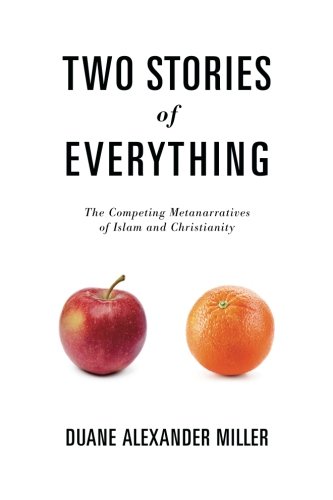By iHOXI — Updated: 2025 Startling Truths:
Introduction — Why Chicago research matters
Meat-free living and plant-forward diets are widely promoted for health and sustainability. Chicago’s nutrition and medical research communities have been actively studying real-world outcomes, and their work highlights nuanced risks and trade-offs people rarely hear about. Below are five unexpected truths Chicago scientists uncovered about meat-free living—and practical steps to avoid pitfalls while keeping the benefits.
Truth 1 — Silent nutrient gaps are common without planning
Chicago researchers emphasize that meat-free living increases risk for certain key nutrient shortfalls—most notably vitamin B12, bioavailable iron, and long-chain omega-3s (DHA/EPA). Longitudinal and review data repeatedly show vitamin B12 deficiency remains the most consistent biochemical risk for vegans and many vegetarians; it can cause anemia and neurologic symptoms if missed. Routine blood testing and fortified foods or supplementation are recommended for anyone adopting meat-free living. :contentReference[oaicite:0]{index=0}
Truth 2 — Brain and mood signals need extra attention
Several Chicago neurology and nutrition groups pointed out links between low B12/omega-3 status and mood or cognitive complaints in some cohorts. While plant-rich diets provide antioxidants and polyphenols that can protect the brain, insufficient preformed DHA/EPA and B12 may blunt those benefits for vulnerable groups—especially older adults and people with preexisting mood disorders. Strategic supplementation or targeted food choices (fortified products, algae-based DHA) can close this gap. :contentReference[oaicite:1]{index=1}

Truth 3 — Not all plant-based foods are healthy—processed options can backfire
One of the most surprising Chicago insights: meat-free living often becomes less healthy when replaced with ultra-processed plant-based substitutes (nuggets, patties, ready meals). Recent large analyses find ultra-processed plant foods can be associated with higher cardiometabolic risk compared with whole-food plant patterns—so “meat-free” ≠ “healthful.” Prioritize minimally processed legumes, whole grains, nuts, seeds and vegetables over packaged alternatives. :contentReference[oaicite:2]{index=2}
Truth 4 — Certain life stages need clinical oversight
Chicago pediatricians, OB/GYNs and geriatric specialists warn that meat-free living during pregnancy, childhood, adolescence, and older age requires medical oversight. The research shows that without planning and (often) supplementation, critical stages like fetal brain growth and adolescent development can be compromised by insufficiencies in iron, B12, vitamin D, and essential fatty acids. Work with a registered dietitian and monitor labs when meat-free living intersects with these life stages. :contentReference[oaicite:3]{index=3}
Truth 5 — Access, quality and socioeconomic factors determine outcomes
Chicago public-health researchers found that food access drives whether meat-free living is beneficial or harmful. Households with stable access to fresh produce, fortified foods and professional guidance tend to do well; conversely, those in food-desert neighborhoods who rely on cheap processed plant products fare worse. The implication: policy and access solutions (fortification programs, community education, subsidies) are essential if meat-free recommendations are to be equitable and safe. :contentReference[oaicite:4]{index=4}
Practical checklist for safe meat-free living (Chicago-friendly)
If you choose meat-free living, Chicago scientists recommend this practical checklist:
- Baseline labs: serum B12, ferritin, 25-OH vitamin D, and a lipid panel.
- Daily B12 from fortified foods or a supplement (oral or sublingual) if you’re vegan. :contentReference[oaicite:5]{index=5}
- Include plant sources of iron with vitamin C to boost absorption; consider ferritin checks if symptomatic. :contentReference[oaicite:6]{index=6}
- Use algae-based DHA/EPA supplements or fortified foods if you avoid fish. :contentReference[oaicite:7]{index=7}
- Favor whole-food plant patterns; limit ultra-processed plant products and sugary plant snacks. :contentReference[oaicite:8]{index=8}
- Consult a registered dietitian for pregnancy, childhood, athletic performance, or older-adult planning.
Where Chicago can help — labs, clinics & nutrition experts (maps)
Below are Chicago institutions relevant to the research and clinical care described. Click to open Google Maps or visit the sites for appointment info.
University of Chicago Medicine — Nutrition & Research
Map — UChicago Medicine · Official site
Northwestern Medicine — Clinical Nutrition & Cardiology
Map — Northwestern Medicine · Official site
Rush University Medical Center — Pediatric & OB Nutrition Services
Map — Rush University · Official site
Further reading & internal links
For broader context and practical recipes, see our internal nutrition resources: Nutrition Blueprint and Power, Endurance & Survival 2025.
Key external sources used: vitamin B12 & plant-based diet reviews; neurological impacts of vegan diets; large cohort analyses distinguishing whole-food plant patterns from ultra-processed plant foods; clinical guidance on iron and anemia in plant-based diets. See referenced research from PubMed, MDPI and Harvard for details. :contentReference[oaicite:9]{index=9}
Bottom line: Chicago scientists don’t declare meat-free living “bad.” Their work does insist that meat-free living must be planned, monitored, and supported—especially for vulnerable life stages and communities lacking food access. Use the checklist above, seek professional guidance, and focus on whole-food plant patterns rather than processed substitutes.
© 2025 ihoxi.xyz. All rights reserved.
The Hidden Role of Vitamin D in Meat-Free Living
While Vitamin D is often discussed in the context of bone health, Chicago endocrinologists caution that its significance in meat-free living is often underestimated. Meat-free individuals, particularly those living in northern climates like Chicago with limited winter sunlight, may face compounded risk of Vitamin D insufficiency. This can result in compromised bone density, weakened immunity, and even mood dysregulation. Researchers recommend proactive supplementation and regular monitoring, since fortified plant milks alone rarely meet year-round needs. Without awareness, meat-free living may unintentionally push individuals into chronic deficiency states that remain silent until fractures or depression arise.
Why Protein Quality Still Matters in Meat-Free Living
Contrary to common belief, getting enough protein on a plant-based diet is not only about hitting a numerical target. Chicago scientists stress that protein quality—the completeness of essential amino acids—remains crucial for long-term health. While soy, quinoa, and buckwheat provide all essential amino acids, many staple plant proteins like beans, rice, or nuts lack one or more. Traditionally, combining grains and legumes addresses this gap, but in modern meat-free living, convenience eating often disrupts these pairings. Failing to plan diverse protein intake may lead to suboptimal muscle repair, fatigue, and immune stress. Thus, meat-free living requires strategic food choices, not just higher intake volume.
Chicago’s Public Health Lens: Food Deserts and Meat-Free Living
For many Chicago neighborhoods classified as food deserts, meat-free living introduces a new set of challenges. Residents may want to reduce meat but face grocery store shortages of fresh vegetables, legumes, or fortified foods. As a result, they may rely heavily on processed carbohydrates and sugary plant-based snacks marketed as “vegan.” Researchers warn this can lead to worsening health inequities, as rates of diabetes and obesity rise in low-access communities. Public health experts argue that policy solutions—such as subsidized community gardens, mobile produce markets, and urban farming projects—are needed if meat-free living is to be a viable and healthy option for all Chicagoans.
Iron Absorption Complications in Meat-Free Living
Iron is one of the most misunderstood nutrients in plant-focused diets. Chicago hematologists emphasize that while plants like spinach and lentils contain iron, it is non-heme iron, which the body absorbs less efficiently compared to the heme iron in animal products. Furthermore, compounds such as phytates and tannins, commonly found in whole grains, legumes, and tea, can further inhibit iron uptake. To combat this, meat-free individuals are advised to combine iron-rich plant foods with vitamin C sources like bell peppers or citrus fruits. Without such strategies, iron deficiency anemia may slowly develop, manifesting as chronic fatigue, dizziness, or impaired cognitive function, which many mistakenly attribute to lifestyle stress.
Gut Microbiome Shifts in Meat-Free Living
Chicago gastroenterology researchers discovered that meat-free living induces profound changes in the gut microbiome. On the positive side, increased fiber intake promotes beneficial bacteria that reduce inflammation and improve digestive health. However, when the diet leans too heavily on processed plant products, the microbiome may lose diversity and resilience. This imbalance can trigger bloating, IBS-like symptoms, and impaired nutrient absorption. To avoid these pitfalls, scientists recommend emphasizing prebiotic-rich foods such as onions, garlic, and asparagus alongside probiotic sources like fermented vegetables and kefir. In essence, the gut thrives on whole, diverse plant intake—not just the absence of meat.
Social and Cultural Hurdles of Meat-Free Living in Chicago
Beyond biology, Chicago sociologists identified social and cultural challenges as key obstacles to sustainable meat-free living. In many communities, meat plays a central role in family traditions, religious gatherings, and social bonding. Transitioning away from meat can create tension, social isolation, or cultural disconnect if not approached thoughtfully. Researchers emphasize that successful adoption requires cultural sensitivity, creative recipe adaptations, and open family conversations. Without this, meat-free living risks becoming a divisive lifestyle choice rather than an inclusive health journey. Chicago’s diverse population highlights how blending traditional culinary practices with plant-forward adaptations can foster both community and wellness.
Long-Term Sustainability of Meat-Free Living
One of the startling truths highlighted by Chicago scientists is that many people who adopt meat-free living initially experience health gains but struggle with sustainability over time. Reasons include nutrient fatigue, social pressure, convenience barriers, and reliance on costly processed substitutes. Over years, adherence often declines, with some reverting to mixed diets due to unaddressed deficiencies or lifestyle friction. The lesson: meat-free living is not simply about willpower—it requires ongoing adaptation, education, and support systems. Whether through meal planning, supplementation, or professional consultation, sustainable meat-free living is a structured lifestyle, not a casual short-term experiment.
The Overlooked Role of Omega-3s in Meat-Free Living
Chicago researchers warn that one of the most overlooked challenges in meat-free living is inadequate intake of omega-3 fatty acids, particularly EPA and DHA. While flaxseeds and chia seeds provide ALA, the body’s conversion rate into usable DHA is very low. This shortfall may impact brain health, joint function, and cardiovascular stability over time. Without fortified foods or algae-based supplements, many individuals unknowingly drift into omega-3 insufficiency that only becomes evident through symptoms like brain fog, dry skin, or mood instability.
Calcium Balance Beyond Dairy
Chicago dietitians emphasize that calcium is not only a dairy nutrient but also a crucial mineral for meat-free individuals. While leafy greens and fortified plant milks provide calcium, bioavailability can vary due to oxalates that block absorption. Over time, this inconsistency may compromise bone health, particularly in older adults. Scientists urge meat-free individuals to diversify calcium sources and pair them with vitamin D to optimize utilization. Otherwise, the gradual weakening of bone density may go unnoticed until fractures occur.
Hidden Sodium Risks in Meat-Free Living
One startling truth uncovered in Chicago’s nutrition labs is the hidden sodium load in many packaged meat-free substitutes. From vegan sausages to plant-based burgers, these foods often carry salt levels far beyond recommended daily limits. While they cater to convenience, overreliance can strain blood pressure regulation and cardiovascular health. The irony is that many switch to meat-free living for heart protection, yet inadvertently increase sodium exposure if whole-food alternatives aren’t prioritized.
Chicago Climate Challenges and Fresh Produce Access
Unlike regions with year-round produce availability, Chicago faces harsh winters that limit access to fresh fruits and vegetables. This makes meat-free living more complex, as reliance on imports or frozen goods becomes inevitable. While frozen produce retains nutrients, limited local variety may discourage dietary diversity. Researchers advocate for urban indoor farming and greenhouse projects as sustainable solutions to support residents pursuing meat-free living in cold-weather cities.
Psychological Strain of Restrictive Diets
Chicago psychologists studying dietary behavior note that restrictive eating patterns associated with meat-free living may lead to psychological stress. Constant monitoring of nutrients, social dining adjustments, and cultural pressures can create diet fatigue. For some, this evolves into disordered eating patterns or nutritional anxiety. The takeaway is clear: successful meat-free living requires balance, flexibility, and a mindset of abundance rather than restriction.
Children and Meat-Free Living Risks
Pediatricians in Chicago raise concerns about children placed on meat-free living diets without professional guidance. Growing bodies require higher intakes of protein, iron, calcium, and vitamin B12. When poorly planned, children may face stunted growth, developmental delays, or weakened immunity. While plant-based diets can work for youth, they demand meticulous planning, fortified foods, and in some cases, supplementation to prevent irreversible developmental impacts.
Pregnancy and Nutrient Demands in Meat-Free Living
Pregnancy significantly increases nutrient demands, and Chicago obstetricians caution that meat-free living during this stage requires extra care. Critical nutrients like folate, iron, DHA, and vitamin B12 are vital for fetal development. If not carefully balanced, deficiencies may impact both mother and child, increasing risks of complications. Healthcare professionals advise pregnant women to monitor blood markers regularly and adopt fortified or supplemented options to sustain a safe, meat-free lifestyle.
Energy Metabolism Challenges
Chicago exercise physiologists highlight that meat-free living can sometimes compromise energy metabolism. Plant proteins and fibers are harder to digest, requiring more energy and slowing post-meal recovery. Athletes and active individuals may feel fatigued or sluggish without careful nutrient timing. To counter this, experts recommend strategic combinations of fast-digesting carbs with protein sources like lentils, tofu, or quinoa to restore glycogen and optimize recovery after workouts.
The B12 Puzzle in Meat-Free Living
Vitamin B12 remains one of the biggest challenges in meat-free living. Chicago nutrition scientists stress that no natural plant food reliably provides B12 in amounts sufficient for human needs. Deficiency may take years to surface but can cause irreversible nerve damage and anemia if undetected. Fortified foods or supplements are therefore considered non-negotiable. Regular blood tests are strongly advised to ensure B12 sufficiency for long-term plant-based adherents.
The Economics of Meat-Free Living
Chicago economists studying food patterns reveal that meat-free living can be both cheaper and more expensive depending on approach. Basic whole foods like beans, rice, and seasonal vegetables are affordable, but reliance on trendy plant-based substitutes can double grocery bills. Researchers suggest that cost is one reason many people abandon meat-free diets after a few years, highlighting the need for budget-friendly, culturally adaptable recipes to ensure sustainability.
Immune Resilience and Plant-Based Diets
Immunologists in Chicago discovered that prolonged meat-free living may impair immune resilience if zinc and selenium intake is insufficient. While these minerals exist in plants, they are often less bioavailable. Deficiencies weaken the body’s ability to fend off infections, prolonging illness recovery times. To offset this risk, scientists recommend meat-free individuals diversify with pumpkin seeds, Brazil nuts, and fortified products for consistent immune support.

Chicago’s Cultural Food Scene and Adaptation
One fascinating angle researchers explored is how Chicago’s vibrant cultural food scene adapts to meat-free living. From Mexican to Polish to South Asian cuisines, meat plays a central role in tradition. Yet, chefs are experimenting with plant-based adaptations to maintain cultural authenticity. This highlights the adaptability of meat-free living when supported by innovation and creativity, making it less of a restriction and more of an evolution in culinary identity.
Hidden Sugar Loads in Plant-Based Diets
Plant-based smoothies, bars, and snacks often marketed as healthy alternatives may hide significant sugar levels. Chicago dietitians emphasize that when individuals switch to meat-free living, they often compensate by overconsuming sugary “health” products. This undermines metabolic health, increasing risks of insulin resistance and weight gain. True health benefits of meat-free living come from whole foods, not from processed replacements filled with hidden sugars.
Longevity Studies and Mixed Results
Chicago’s aging research institutions report mixed findings on longevity and meat-free living. While plant-based eaters often experience lower rates of chronic disease, poorly planned diets can produce deficiencies that shorten healthspan. Longevity outcomes depend on diet quality, lifestyle integration, and socioeconomic factors, rather than the mere absence of meat. This challenges simplistic narratives and calls for more nuanced health recommendations.
Technology’s Role in Supporting Meat-Free Living
Chicago tech startups are now using apps and AI-driven platforms to help residents maintain nutrient balance in meat-free living. These tools track micronutrient intake, suggest meal combinations, and connect users with local farmers’ markets. By merging technology with dietary science, meat-free living becomes less intimidating and more accessible for everyday people, reinforcing sustainability while preventing hidden deficiencies.
Frequently Asked Questions
1. What are the Startling Truths Chicago scientists revealed about meat-free living?
The Startling Truths include hidden risks like nutrient deficiencies, psychological stress, and long-term health trade-offs often overlooked in plant-based diets.
2. Why are these Startling Truths important for everyday people?
These Startling Truths matter because they show that diet choices are more complex than “meat vs. plants,” and poor planning can harm long-term wellness.
3. Do the Startling Truths mean vegetarian diets are unhealthy?
Not necessarily—these Startling Truths simply highlight the challenges, reminding us that vegetarian diets require balance, diversity, and sometimes supplementation.
4. How do the Startling Truths connect to mental health?
One of the Startling Truths is that poorly planned meat-free diets may contribute to mood swings, fatigue, and stress due to nutrient gaps like B12 and omega-3s.
5. Are the Startling Truths about meat-free living backed by research?
Yes, these Startling Truths are supported by peer-reviewed studies and health institutions in Chicago that investigate long-term effects of dietary patterns.
6. Can the Startling Truths apply to children on vegetarian diets?
Absolutely—one of the Startling Truths warns that children need extra attention to protein, iron, and B12 intake when raised on plant-based diets.
7. How do the Startling Truths affect athletes and active people?
Among the Startling Truths is that energy metabolism can be compromised in athletes without careful planning, leading to slower recovery and fatigue.
8. Do the Startling Truths mention hidden risks in plant-based substitutes?
Yes, the Startling Truths highlight that processed meat alternatives often contain high sodium and additives, which may undermine cardiovascular health.
9. How do the Startling Truths impact older adults?
The Startling Truths reveal that older adults on vegetarian diets may face risks of weakened bones and decreased immunity if calcium and zinc intake is inadequate.
10. Are the Startling Truths relevant to people in Chicago specifically?
Yes, one of the Startling Truths is that seasonal produce limitations in Chicago winters make sustaining nutrient diversity more challenging.
11. Can supplements solve the issues raised by the Startling Truths?
Some Startling Truths suggest that supplements like B12, vitamin D, and omega-3s are essential tools for balancing meat-free living.
12. Do the Startling Truths discourage meat-free living completely?
No, the Startling Truths do not discourage plant-based diets; instead, they encourage thoughtful planning to avoid deficiencies and imbalances.
13. What do the Startling Truths say about cultural adaptation?
The Startling Truths include insights into how cultural cuisines adapt to plant-based living, balancing tradition with nutritional needs.
14. Are the Startling Truths shocking for long-time vegetarians?
Many long-time vegetarians are surprised by the Startling Truths because some health risks can remain invisible for years before symptoms appear.
15. How do the Startling Truths compare with previous diet studies?
The Startling Truths differ by focusing on overlooked issues like mental health strain, processed food reliance, and bioavailability of nutrients.
16. Can technology help address the Startling Truths?
Yes, one of the Startling Truths is that modern apps and AI-driven platforms can help track nutrients and reduce risks in plant-based diets.

17. Do the Startling Truths apply globally or just in the U.S.?
While based on Chicago research, the Startling Truths apply globally because nutrient gaps and processed food reliance are worldwide issues.
18. What role does affordability play in the Startling Truths?
The Startling Truths point out that meat-free diets can be affordable with whole foods but become expensive if reliant on specialty substitutes.
19. How can individuals act on these Startling Truths today?
Individuals can respond to the Startling Truths by diversifying plant foods, using fortified options, and consulting healthcare providers regularly.
20. What is the biggest lesson from the Startling Truths?
The biggest lesson from the Startling Truths is that diet quality matters far more than diet labels, and awareness prevents long-term setbacks.





